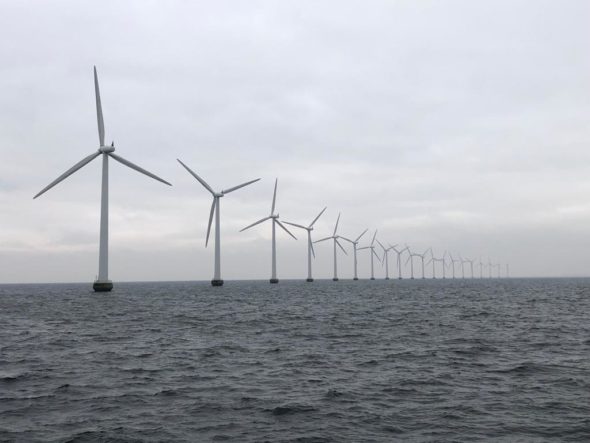All of the seven offshore wind farm projects that will be constructed as part of the first stage of support in the form of a contract for difference in Poland, have already received a green light. However, the firms are consolidating their strength before new applications to build offshore wind farms can be submitted. New alliances are being forged, but new legal acts are necessary to make participation in auctions in 2025 possible – writes Bartłomiej Sawicki, editor at BiznesAlert.pl.
Back in April the Spatial Information System of the Maritime Administration (SIPAM) included information about applications for new location permits for offshore wind farms. Available in the SIPAM were applications made by companies for permits to build artificial islands. After the new plan had been enforced, the applications were made invalid and were withdrawn from SIPAM. Energa, which is part of the PKN Orlen group, entered into the SIPAM six applications for 3.7 GW in total. Other requests were voiced by PGE Baltica, i.e. the Baltica 4 and 5 wind farms. Tauron Ekoenergia was another state owned company that applied for permits for the MEWA 2, MEWA 1a and MEWA 1 projects. The privately owned Synthos also submitted its documents. In total 93 applications were lodged. Most of them will be made invalid, because a new spatial development plan for maritime areas has entered into force.
Together or apart?
The companies are already partnering up to fight for the future investments. PKN Orlen signed a letter of intent with Synthos on developing small and medium reactors (SMR). At the same time as part of this cooperation, apart from SMRs, the companies will also consider joint investments in offshore wind farms. Orlen is gaining experience in preparing this kind of investments, because it is in the middle of developing the 1.2 GW Baltic Power project in partnership with the Canadian Northland Power. The next three months will show whether Synthos will join Orlen as a partner in new offshore projects. That’s when the companies will come up with a cooperation model, because they both have applied for permits to locate wind farms on the Baltic. Earlier Synthos made applications on its own for over 1.2 GW, even though it already had made an agreement with Vattenfall. The company’s CEO Zbigniew Warmuz claims that new requests will be made by the new entity, together with Orlen.
A national player without foreign help
In January state-owned companies also signed a letter of intent to cooperate on offshore wind power. On the 5th of July the PGE Group, Enea and Tauron applied to the Office of Competition and Consumer Protection for a concentration permit to establish joint companies. They want to start a company from scratch to lodge new applications for permits to locate new offshore wind farms. PGE is to be the group’s leader and technological partner that offers experience in implementing projects of this type. New projects will arrive after 2030. In the second half of the 2020s, PGE together with Denmark’s Orsted will implement two 2.5 GW projects Baltica 2 and Baltica 3. After 2030 the Baltica 1 project is to be completed. PGE already has a permit to build an artificial island. A question needs to be asked – will PGE be able to learn from the Danish how to quickly build offshore wind farms, especially that the experts from PGE Baltica will continue to work after 2030 in this special purpose vehicle.
At the end of June, Tauron announced that its letter of intent with Ocean Winds, a special purpose vehicle owned by France’s Engie and Portugal’s EDP, had expired. The companies wanted to develop offshore wind as part of the first wave of support in the form of a contract for difference. In Tauron’s view the deal expired for objective reasons that are independent of the parties. The company explained that because the regulatory environment has changed and the act on promoting offshore wind went into force „a state of complete, permanent and objective impossibility of fulfilling the obligations made in the contract occurred”. However, it did not precisely explain which changes were to blame. The deal between Enea and PGE was signed before the Offshore act and other regulations entered into force. Enea also ended its talks with the Spanish Iberdrola without an agreement. The cooperation on offshore wind farms with a potential capacity of 3.3 GW ended last year.
Why the reshuffles and consolidations?
The new spatial development plan for maritime areas will unblock the granting of new permits, but it may not live up to the appetites of potential investors. According to the calculations made by the Ministry of Climate and Environment, the spatial plan may contribute to the development of even 15 GW, not 11 GW that is proposed in Poland’s Energy Policy until 2040. The Polish Wind Energy Association claims that the total potential may be as much as 30 GW in installed capacity. However, even the several GW may not be enough, considering the demand for Poland’s maritime areas. There are 11 new areas, including those that are part of the second attachment to the offshore act and of the spatial development plan for maritime areas. They still need to be assessed by, among others, the Defense Ministry and the Infrastructure Ministry. Fearing that the area will be too small and that the proceedings before the auctions in 2025 and 2027 will take too long, the companies are making alliances. They’ve decided to postpone filing new applications until the Ministry of Infrastructure issues a regulation on how to assess the applications for permits, which will be of key importance for the new projects. It will determine the criteria for assessing the applications for permits and the score ranking used to evaluate the investor. The regulation should be ready before the end of the summer holidays, because that’s when the sectoral deal for offshore wind farms is to be signed.









